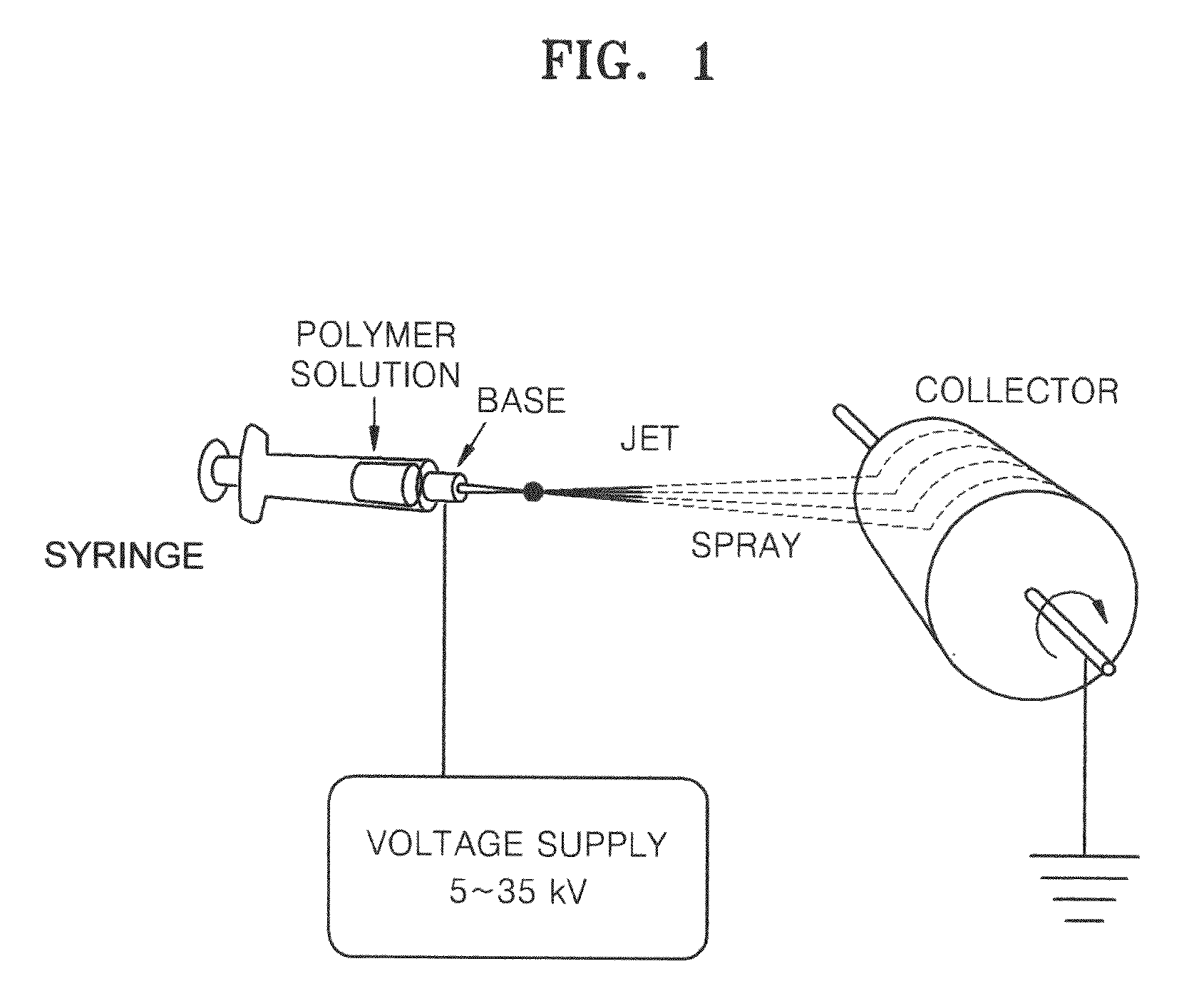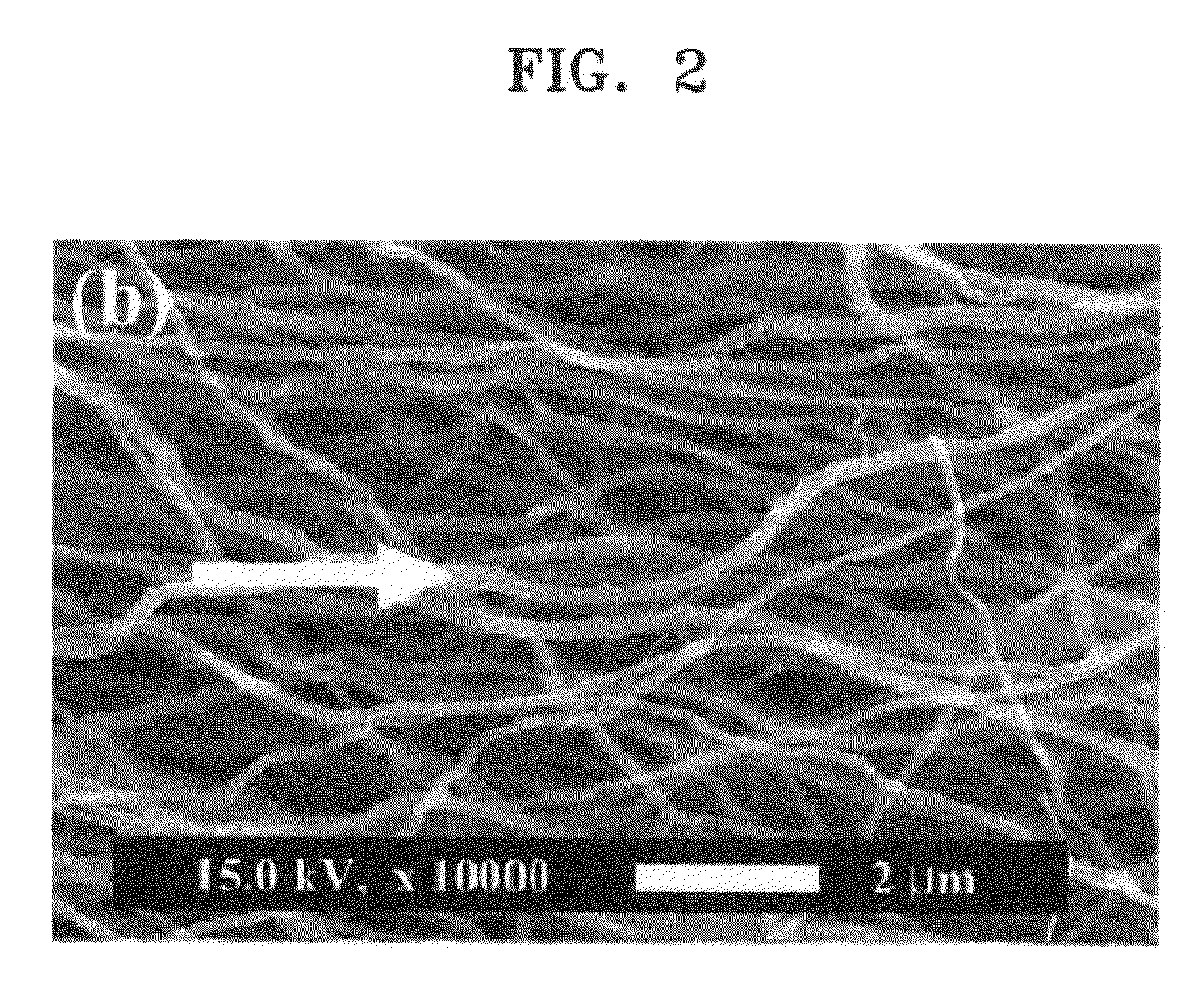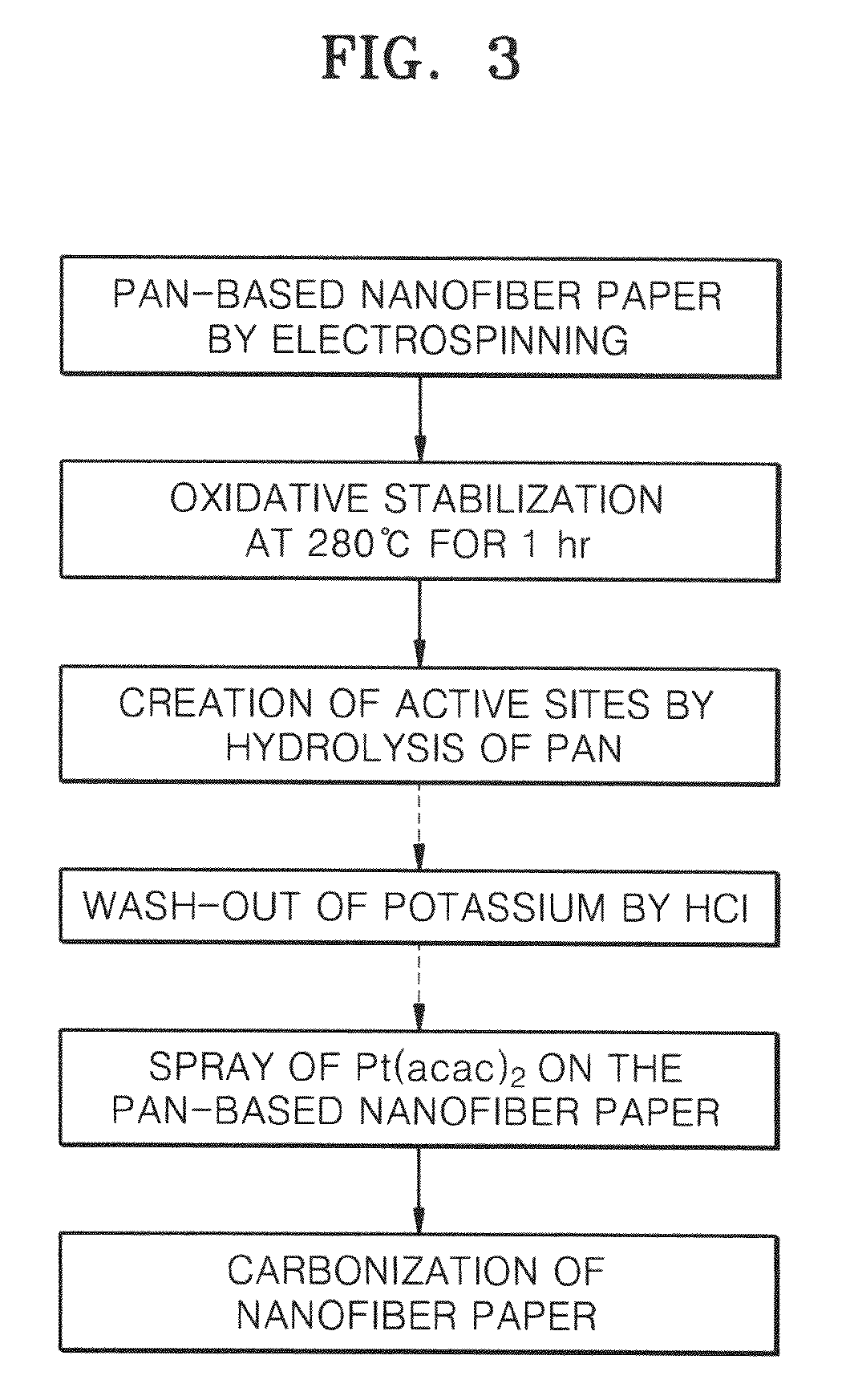Nanocomposite for fuel cell, method of preparing the nanocomposite, and fuel cell including the nanocomposite
a fuel cell and nanocomposite technology, applied in the field of carbon nanofibers, can solve the problems of uniform dispersion of catalysts in carbon supports, and achieve the effects of improving fuel cell efficiency, high surface oxygen content, and high electrochemical efficiency
- Summary
- Abstract
- Description
- Claims
- Application Information
AI Technical Summary
Benefits of technology
Problems solved by technology
Method used
Image
Examples
example 1
Preparation of Carbon Nanofiber
[0100]First, polyacrylonitrile (PAN, Aldrich) was dissolved in N,N-dimethylformamide (DMF, Aldrich) solvent to prepare a 10 wt % solution and the solution was electrospun to prepare a carbon nanofiber precursor in a web form. The solution was electrospinned at a rate of 1 ml / hr, and 20 kV as optimized bias voltage was applied thereto, wherein the distance between electrodes (between a needle and a collector) was 15 cm, and a drum covered with an aluminum foil was used as the collector. The collector was rotated at 100 rpm. The needle had a diameter of 0.1 to 1 mm, and the electrospinning was performed at room temperature (electrospinning operation). FIG. 1 is a schematic diagram illustrating an electrospinning method.
[0101]The electrospun carbon nanofiber precursor in a web form was then stabilized in a furnace with a compressed air supply at 280° C. for 1 hour. A SEM image of the prepared carbon nanofiber is illustrated in FIG. 2.
[0102]The carbon nano...
example 2
Preparation of Nanocomposite
[0104]FIG. 3 is a flowchart illustrating a process for preparing a nanocomposite according to Example 2 of the present invention.
[0105]First, polyacrylonitrile (PAN, Aldrich) was dissolved in N,N-dimethylformamide (DMF, Aldrich) solvent to prepare a 10 wt % solution, and the solution was electrospun to prepare a carbon nanofiber precursor in a web form. The solution was electrospinned at a rate of 1 ml / hr, and 20 kV as optimized bias voltage was applied thereto, wherein the distance between electrodes (between a needle and a collector) was from 10 to 20 cm, and a drum covered with an aluminum foil was used as the collector. The collector was rotated at 100 rpm. The needle had a diameter of 0.1 to 1 mm, and the electrospinning was performed at room temperature (electrospinning operation).
[0106]The electrospun carbon nanofiber precursor in a web form was then stabilized in a furnace with a compressed air supply at 280° C. for 1 hour (stabilization operation...
example 3
[0111]A nanocomposite was prepared in the same manner as in Example 2, except that the carbon nanofiber precursor was immersed in a 0.1 M KOH solution at 30° C. for 2 hours to hydrolyze the surface of the carbon nanofiber precursor.
PUM
| Property | Measurement | Unit |
|---|---|---|
| binding energy | aaaaa | aaaaa |
| binding energy | aaaaa | aaaaa |
| binding energy | aaaaa | aaaaa |
Abstract
Description
Claims
Application Information
 Login to View More
Login to View More - R&D
- Intellectual Property
- Life Sciences
- Materials
- Tech Scout
- Unparalleled Data Quality
- Higher Quality Content
- 60% Fewer Hallucinations
Browse by: Latest US Patents, China's latest patents, Technical Efficacy Thesaurus, Application Domain, Technology Topic, Popular Technical Reports.
© 2025 PatSnap. All rights reserved.Legal|Privacy policy|Modern Slavery Act Transparency Statement|Sitemap|About US| Contact US: help@patsnap.com



